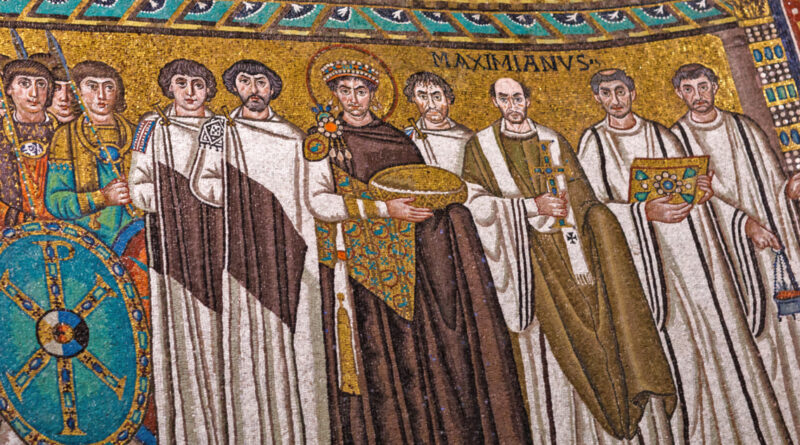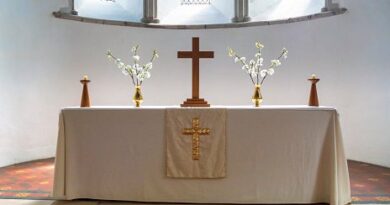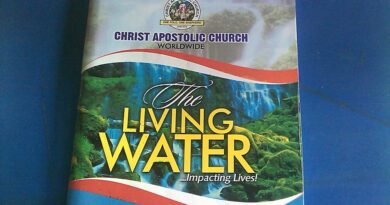Learning Christian History Ep 1: The Rise Of Christianity
Learning Christian History Episode 1: The Rise Of Christianity: Origins, Growth, And Global Influence
Christianity began as an offshoot of the Jewish faith during the first century CE. It all began with one of history’s most significant figures: Jesus of Nazareth, the founder of Christianity. From the teachings of Jesus and the acts of his followers after his death, the Christian faith spread across the world. Today it is the largest religion in the world and has widely influenced law, personal morality, and philosophies.
The early church began with small groups of followers meeting in homes. The news of Jesus was spread by word of mouth. The message was strengthened by the acts of these early believers—people who gave up worldly possessions, shared them with those in need, and cared for the sick. This spreading of the story and meaning behind Jesus’ death brought Christianity to many Roman cities. Because of clashes with the Jewish and Roman authorities, many early church leaders were killed for their beliefs.
Despite persecution in the Roman Empire, the faith spread as a grassroots movement that became established by the third century both inside and outside the empire. New Testament texts were written, and church government was loosely organised in its first centuries, though the biblical canon did not become official until 382.
Paul established Christian churches throughout the Roman Empire, including Europe and beyond—even into Africa.
Persecution and Expansion
However, in all cases, the church remained small and was persecuted, particularly under tyrannical Roman emperors like Nero (54-68), Domitian (81-96), under whom being a Christian was an illegal act, and Diocletian (284-305). Many Christian believers died for their faith and became martyrs for the church (Bishop Polycarp and St. Alban, amongst others).
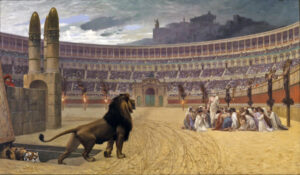
Constantine I and the Edict of Milan
The Roman Emperor Constantine I became the first Christian emperor in 313. He issued the Edict of Milan, expressing tolerance for all religions. He did not make Christianity the state religion, but he did provide crucial support. Constantine called it the first of seven ecumenical councils.
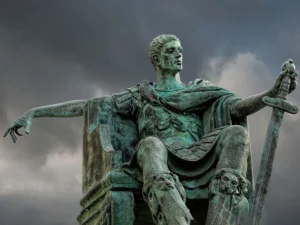
By the Early Middle Ages, Eastern and Western Christianity had already begun to diverge, while missionary activities spread Christianity west and north. Monks and nuns played a prominent role in establishing a Christendom that influenced every aspect of mediaeval life.
Christianity became the official religion of the Roman Empire. Constantine then needed to establish the Christian faith and called the First Council of Nicea in 325 AD, which formulated and codified the faith.
Formulating the faith
Over the next few centuries, there were debates and controversies about the precise interpretation of the faith, as ideas were formulated and discussed. The Council of Chalcedon, held in 451, was the last council held whilst the Roman Empire was intact. It gave rise to the Nicene Creed, which Christians still say today to affirm their belief in God, Christ, and his church.
When Rome fell in 476, it meant that Western and Eastern Christians were no longer under the same political rule, and differences in belief and practice arose between them. From the ninth century into the twelfth, politicisation and Christianisation went hand-in-hand in developing East Central Europe, Russia, language, literacy, and literature.
Byzantium was more prosperous than the West, and Eastern Orthodoxy was influential in Eastern Europe because it was organised and more united with the state than Christianity in the West. Both Islam and the Western Crusades negatively impacted Eastern Christianity. During the High Middle Ages, Eastern and Western Christianity had grown far enough apart that differences led to the East-West Schism of 1054.
A temporary reunion was not achieved until the year before the fall of Constantinople. The conquest of Constantinople in 1453 put an end to the institutional church as established under Constantine, though it survived in an altered form.
Various catastrophic circumstances, combined with a growing criticism of the Catholic Church in the 1300s–1500s, led to the Protestant Reformation and its related reform movements. Reform and its Catholic counterpart, the counter-reformation, were followed by the European wars of religion, the development of modern concepts of tolerance, and the Age of Enlightenment.
Christianity also influenced the New World through its connection to colonialism, its part in the American Revolution, the dissolution of slavery in the West, and the long-term impact of Protestant missions.
In the twenty-first century, traditional Christianity has declined in the West, while new forms have developed and expanded throughout the world. Today, there are more than two billion Christians worldwide, and Christianity has become the world’s largest and most widespread religion.
READ: Finding Strength in God’s Promises: Episode 3
Content Credit| https://study.com/learn/lesson/christianity-origin-teachings-beliefs-history.html, https://en.wikipedia.org/wiki/History_of_Christianity
Picture Credit |
https://www.christianity.com/church/church-history/a-look-at-the-early-church-11629559.html
https://en.wikipedia.org/wiki/Persecution_of_Christians_in_the_Roman_Empire
https://www.britannica.com/list/major-events-in-the-life-of-constantine-i

